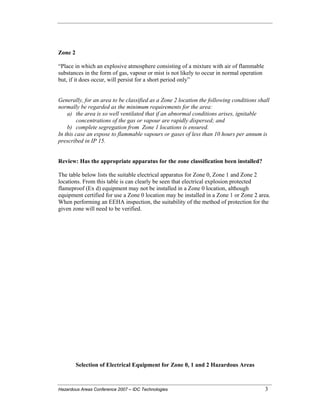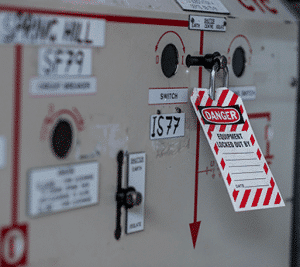The Facts About Roar Solutions Uncovered
The Facts About Roar Solutions Uncovered
Blog Article
An Unbiased View of Roar Solutions
Table of ContentsRoar Solutions for DummiesThe Greatest Guide To Roar SolutionsThe 7-Second Trick For Roar Solutions
In such an environment a fire or surge is possible when three standard conditions are met. This is usually described as the "hazardous area" or "burning" triangular. In order to shield installations from a potential explosion an approach of evaluating and identifying a potentially hazardous location is required. The objective of this is to guarantee the appropriate selection and setup of devices to eventually prevent a surge and to ensure safety of life.
(https://www.dreamstime.com/thomascarrillo4740_info)
No equipment ought to be set up where the surface area temperature level of the tools is more than the ignition temperature of the provided hazard. Below are some usual dust unsafe and their minimum ignition temperature. Coal Dust 380C 225C Polythene 420C (melts) Methyl Cellulose 420C 320C Starch 460C 435C Flour 490C 340C Sugar 490C 460C Grain Dirt 510C 300C Phenolic Material 530C > 450C Aluminium 590C > 450C PVC 700C > 450C Soot 810C 570C The likelihood of the risk existing in a focus high adequate to trigger an ignition will certainly vary from location to location.
In order to categorize this risk a setup is separated into locations of threat depending upon the amount of time the harmful exists. These areas are referred to as Areas. For gases and vapours and dusts and fibres there are 3 zones. Zone 0 Area 20 A harmful ambience is very likely to be existing and may exist for long periods of time (> 1000 hours per year) or perhaps constantly Zone 1 Area 21 A hazardous atmosphere is possible however not likely to be existing for extended periods of time (> 10 450 C [842 F] A category of T6 implies the minimal ignition temperature level is > 85 C [185 F] Harmful area electrical devices maybe created for use in higher ambient temperatures. This would certainly showed on the ranking plate e.g. EExe II C T3 Ta + 60C( This suggests at 60C ambient T3 will not be surpassed) T1 T1, T2, T3, T4, T5, T6 T2 T2, T3, T4, T5, T6 T3 T3, T4, T5, T6 T4 T4, T5, T6 T5 T5, T6 T6 T6 A T Course score of T1 indicates the maximum surface temperature generated by the instrument at 40 C is 450 C. Assuming the linked T Class and Temperature score for the devices are appropriate for the location, you can always utilize an instrument with a more rigorous Division ranking than required for the area. There isn't a clear solution to this concern sadly. It actually does depend upon the kind of devices and what repair work require to be brought out. Tools with particular examination procedures that can not be carried out in the area in order to achieve/maintain 3rd party rating. Have to return to the manufacturing facility if it is before the devices's service. Field Fixing By Authorised Worker: Complicated testing may not be called for nonetheless particular treatments might need to be complied with in order find here for the tools to keep its third party score. Authorized employees must be utilized to perform the work properly Repair work need to be a like for like replacement. New component have to be taken into consideration as a straight replacement requiring no unique screening of the equipment after the repair work is complete. Each tool with a hazardous score must be reviewed independently. These are described at a high level below, however, for more detailed information, please refer directly to the guidelines.
An Unbiased View of Roar Solutions
The devices register is a comprehensive data source of tools documents that includes a minimum set of fields to determine each product's location, technological criteria, Ex-spouse classification, age, and environmental information. The ratio of In-depth to Close inspections will certainly be determined by the Equipment Risk, which is assessed based on ignition threat (the chance of a source of ignition versus the probability of a combustible ambience )and the hazardous area category
( Zone 0, 1, or 2). Carrying out a robust Risk-Based Inspection( RBI )approach is critical for making sure compliance and safety and security in handling Electrical Devices in Hazardous Areas( EEHA).
The Main Principles Of Roar Solutions

In regards to eruptive threat, a dangerous area is an atmosphere in which an explosive atmosphere exists (or might be anticipated to be existing) in quantities that call for unique preventative measures for the building and construction, setup and use of tools. eeha. In this post we discover the challenges dealt with in the work environment, the danger control steps, and the required expertises to function securely
These materials can, in specific problems, form eruptive ambiences and these can have significant and heartbreaking repercussions. Many of us are familiar with the fire triangular remove any type of one of the 3 components and the fire can not occur, however what does this mean in the context of unsafe locations?
In the majority of instances, we can do little concerning the levels of oxygen in the air, yet we can have significant impact on sources of ignition, as an example electric equipment. Dangerous locations are documented on the dangerous location classification illustration and are recognized on-site by the triangular "EX-SPOUSE" indication. Below, amongst various other key info, zones are split into three kinds depending on the hazard, the possibility and duration that an explosive ambience will certainly exist; Area 0 or 20 is deemed one of the most unsafe and Area 2 or 22 is considered the least.
Report this page